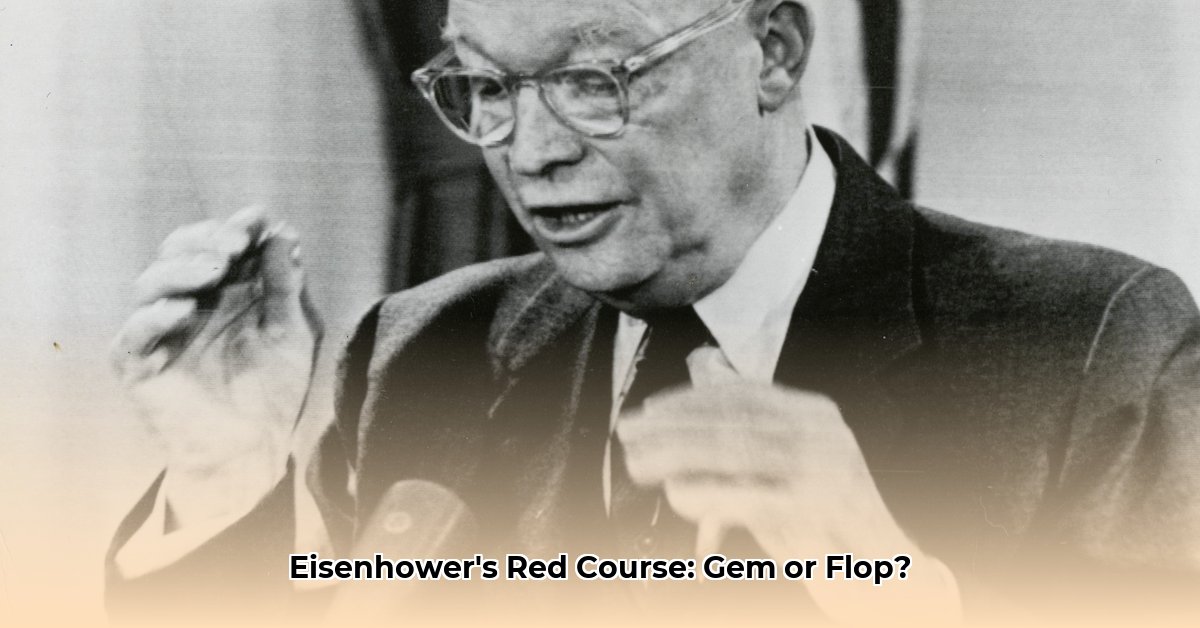Is Eisenhower Park’s Red Course a must-play for golf enthusiasts? This in-depth review explores the course’s rich history, challenging layout, and overall golfing experience, answering the question: Does Eisenhower Red live up to its championship legacy? For more great public course reviews, check out other great courses.
Eisenhower Park Red: Where History Meets Modern Golf
Eisenhower Park’s Red Course isn’t just another day on the links; it’s a step back in time. As the host of the 1926 PGA Championship, it holds a unique place in golf history. Designed by Devereux Emmet, this course has challenged legends and continues to offer a stern test for golfers of all levels. But does this storied past translate into a compelling modern golfing experience?
A Championship Pedigree
Imagine golf in the roaring twenties: hickory shafts, plus fours, and the emergence of legends. Eisenhower Park Red, then known as Salisbury Golf Club, stood at the center of it all, hosting Sam Snead’s first major victory. This event solidified the course’s place in golfing lore. Beyond the PGA Championship, the course also hosted a Senior Tour event until 2008, further adding to its resume. But can a course designed nearly a century ago still compete with the modern layouts of today?
Course Design: A Hole-by-Hole Analysis
While Devereux Emmet’s original design is still evident, time and alterations have shaped the course. Here’s a breakdown of some notable holes:
- Hole 1: Originally a par 5, this hole has been shortened to a challenging par 4, playing downhill off the tee and back uphill to the green.
- Hole 4: The #1 handicap hole, a sharp dogleg left par 4. Accuracy is key, with a narrow green guarded by bunkers.
- Hole 5: A short par 3 with a punchbowl-like green surrounded by bunkers.
- Hole 9: A reachable par 4 for long hitters, playing into a valley with an uphill approach to a narrow green.
- Hole 14: Arguably the course’s signature hole, a dogleg left par 4 featuring a tee shot over a hazard and bunkers guarding the fairway.
- Hole 15: A demanding par 4 with an uphill approach over water to a green that slopes from left to right.
Many reviewers note that while the course is challenging, some holes lack distinct character, blending together and making the round somewhat forgettable.
Condition and Maintenance: Meeting Expectations?
Course conditions are generally good, but inconsistencies exist. Regular maintenance is evident, yet some areas could benefit from additional attention. The greens are typically well-maintained, but bunkers can be inconsistent. These small details can affect the overall experience, highlighting the importance of consistent upkeep.
Accessibility: A Challenge for Non-Residents
One of the biggest criticisms of Eisenhower Park Red is its limited accessibility for non-Nassau County residents. Securing tee times can be difficult, creating frustration for those outside the immediate area. This exclusivity, while benefiting locals, limits the course’s potential reach and reputation.
Amenities and Facilities: What to Expect
While Eisenhower Park itself is a large and well-maintained public space, the golfing amenities are somewhat basic. The clubhouse is functional but lacks premium features. The driving range is available but located a distance from the Red Course, which is inconvenient for pre-round warm-ups. This no-frills approach reflects the course’s municipal status.
The Verdict: Historical Significance vs. Modern Appeal
Eisenhower Park Red presents a complex picture. It’s a course steeped in history, offering a challenging layout that tests golfers’ skills. However, it also suffers from accessibility issues, inconsistent course conditions, and a lack of memorable holes. The question remains: Is the historical significance enough to outweigh these shortcomings?
Recommendations for Improvement
To elevate Eisenhower Park Red and ensure its continued relevance, consider the following:
- Enhance Accessibility: Implement a tiered pricing system for non-residents, allowing broader access while still prioritizing local play.
- Invest in Course Improvements: Focus on restoring and enhancing the unique features of Devereux Emmet’s original design.
- Upgrade Amenities: Improve the clubhouse facilities and ensure convenient access to the driving range.
- Market the History: Highlight the course’s rich history through signage, exhibits, and promotional materials.
- Host Events: Attract regional and national attention by hosting tournaments and events.
By addressing these areas, Eisenhower Park Red can honor its past while creating a more compelling and accessible golfing experience for the future.
Eisenhower Park Red: A Hole-by-Hole Guide and Strategies for Success
Key Takeaways:
- Eisenhower Park Red is a historic course that hosted the 1926 PGA Championship.
- The course design features challenging holes with well-placed bunkers and doglegs.
- Accessibility for non-residents is limited, making tee times difficult to secure.
- Improving course conditions and amenities could enhance the overall experience.
This guide provides a detailed hole-by-hole analysis, offering insights and strategies to help golfers navigate the course successfully.
Front Nine
- Hole 1 (Par 4, 463 yards): A challenging opener, playing downhill off the tee and uphill to the green. Favor the left side of the fairway to avoid the right-side bunkers.
- Hole 2 (Par 3, 183 yards): An uphill par 3 with a kidney-shaped green defended by bunkers. Club selection is crucial due to the elevation change.
- Hole 3 (Par 5, 521 yards): A sharp dogleg right, requiring an accurate tee shot to avoid the trees. Long hitters can attempt to cut the corner, but caution is advised.
- Hole 4 (Par 4, 453 yards): The #1 handicap hole, a tight dogleg left. Accuracy is paramount to avoid the trees and bunkers.
- Hole 5 (Par 3, 162 yards): A classic par 3 with a punchbowl-like green surrounded by bunkers. Precision is key to finding the putting surface.
- Hole 6 (Par 4, 425 yards): A dogleg right, with bunkers guarding both sides of the fairway. A well-placed tee shot sets up an approach to a back-to-front sloping green.
- Hole 7 (Par 5, 546 yards): A long, straight par 5 with bunkers on both sides of the fairway. A good opportunity to pick up a stroke.
- Hole 8 (Par 4, 377 yards): A relatively short par 4 with a small, undulating green surrounded by bunkers. Accuracy is essential on the approach.
- Hole 9 (Par 4, 338 yards): A reachable par 4 for long hitters, playing into a valley with an uphill approach.
Back Nine
- Hole 10 (Par 4, 426 yards): A dogleg right with a large bunker guarding the corner. The green slopes back to front.
- Hole 11 (Par 4, 385 yards): A straightaway par 4 with a flat fairway and green. A good opportunity for a birdie.
- Hole 12 (Par 5, 499 yards): A short par 5 with a generous fairway. Long hitters can reach in two, but bunkering around the green demands precision.
- Hole 13 (Par 3, 211 yards): A long, uphill par 3 over marsh. Club selection is critical.
- Hole 14 (Par 4, 414 yards): A dogleg left with a tee shot over a hazard. Bunkers guard both sides of the fairway and the green.
- Hole 15 (Par 4, 453 yards): A demanding par 4 with an uphill approach over water. The green slopes from left to right.
- Hole 16 (Par 3, 175 yards): A par 3 with a green that slopes back to front.
- Hole 17 (Par 5, 518 yards): A long, straight par 5 with bunkers on both sides of the fairway. The green slopes left to right.
- Hole 18 (Par 4, 453 yards): A challenging finishing hole, playing uphill to a generous fairway.
Strategies for Success
- Accuracy is Key: Eisenhower Park Red rewards accurate tee shots and approaches.
- Bunker Awareness: The course is heavily bunkered, so pay attention to bunker placement.
- Course Management: Play within your limitations and avoid aggressive shots.
- Putting: The greens can be tricky, so practice your putting.
By understanding the course layout and implementing these strategies, golfers can improve their chances of success at Eisenhower Park Red.
Eisenhower Park Red: Examining the Accessibility Challenges for Non-Residents
Key Takeaways:
- Eisenhower Park’s Red Course is a challenging and historic golf course.
- Accessibility for non-










